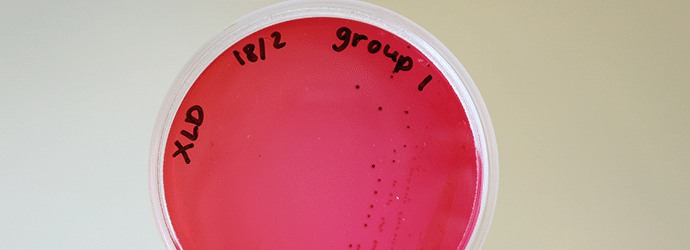Researchers spend considerable time and money on proper experimental design for in vitro cell culture, so why is it so difficult for cells in culture to have the same physiological function as in our body?
You can be working in a sterile environment, utilizing high-end laboratory cell culture equipment, and have supreme cell culture reagents, but your cells are still not happy. The answer is simple. Oxygen levels.
Let’s take a closer look at why we tend to stick to 20% oxygen and whether it’s always the best idea.
Why We Tend to Use 20% Oxygen in Cell Culture
We all know that every cell in our body needs oxygen to survive and produce energy through oxidative phosphorylation.
Oxygen is essential to cell growth and differentiation but the LEVEL of oxygen that cells are exposed to is critical to cell function. The majority of cell culture laboratories are set up to culture cells in an incubator environment of 20% oxygen and 5% carbon dioxide.
What is amazing about this “standard protocol of care” is that very few cells in the body are ever exposed to 20% oxygen (160 mm mercury (Hg)) under normal physiological conditions.
The only cells that do survive in an environment with 20% oxygen are lung alveolar cells, and shortly after blood is oxygenated the oxygen level in arterial blood falls to 10.5-13% (80-100 mm Hg).
Even more striking is that many organs function normally at oxygen levels ranging from 2-8% (19-70 mm Hg).
So how can we expect cells to function the same and respond to treatments as they would in vivo when we are culturing them in superficial levels of oxygen? Could you run a mile in your normal time if you had a 50lb weight on your back? No, probably not.
Physiological Consequences of Excess Oxygen
What is the cellular response to superficial oxygen levels? As stated earlier, your cells need oxygen for the generation of energy through oxidative phosphorylation. This is the reduction of oxygen (O2) to water and the synthesis of ATP by our mitochondria.
Remember those redox reactions from biochemistry classes? Who would have thought that in grown-up life we’d be discussing the fabulous oxidizing capacity of O2: O2 can accept four electrons.
Although this reduction reaction is relatively simple and efficient, with no harmful byproducts produced, if this reaction is overwhelmed by excessive levels of O2 then the reduction of O2 becomes less efficient (transfer of only 1 or 2 electrons) and there is generation of reactive oxygen species (ROS) compounds, mainly superoxide and peroxide.
What O2 Concentration is Physiological for Your Cell Line?
Excessive levels of ROS impair mitochondrial function and result in cellular damage and death. How can we expect our cell lines to be “normal” in culture when we are sending them into oxidative stress?
So 20% O2 is not the best level for the majority of cell lines. The next question is what do you do?
For example, most cancer cell lines thrive in hypoxic (<2%) O2 levels, while neuronal cells have increased survival, proliferation, and dopaminergic differentiation in 2-5% O2 levels.
In short—find your level and stick with it throughout your culture.
Do You Need to Buy All New Equipment?
a) Not necessarily. Culturing cells at 20% O2 or ambient air means that you can take your cells in and out of the incubator or hood without worrying about changing their exposure to O2 levels.
So if your experimental design requires no cell manipulation (changing medium or imaging) then yes you can culture cells directly in your existing incubator by balancing your O2 levels to the desired setting with Nitrogen (N2) gas (provided of course that your incubator has an air inlet valve for N2).
b) If you reduce the O2 level in your culture system and need to manipulate cells while in culture then you will need to ensure that your manipulation environment has O2 levels consistent with your culture environment. This will require purchasing a glove box chamber where you can culture and manipulate cells in the same environment (increases contamination). Alternatively, and perhaps preferably, chambers can be purchased in which you can adjust the O2 levels to the desired setting and then when you need to manipulate cells move them into a separate glove box set at the same O2 level.
c) Equally important is to make sure that your cell culture medium is also calibrated to your desired O2 level. If this is not done then your cells will be stressed by re-oxygenation during media change.
d) If cells need to be imaged while in culture then you will also need to place a microscope in a glove box that has viewing portals for the microscope eyepieces.
e) There are several companies that manufacture cell culture equipment for performing cell culture at different O2 levels. These systems can be very complex or very simple depending on your laboratory’s needs.
Now You Know!
Understanding what “normal” physiology is for your particular cell line and recapitulating that environment in your cell culture system is important for making your in vitro data make sense of what is happening in vivo.
As we all know: Happy cells = good results = translational applications. (If only it were that simple, eh.) So take a deep breath, do your homework, and let your cells breathe happily!
Further Reading
Check out this paper for more information on obtaining physiologically relevant oxygenation in tissue cultures. [1]
1. Martinez CA, Cistulli PA, Cook KM. (2019) A Cell Culture Model that Mimics Physiological Tissue Oxygenation Using Oxygen-permeable Membranes. Bio Protoc 9(18)






